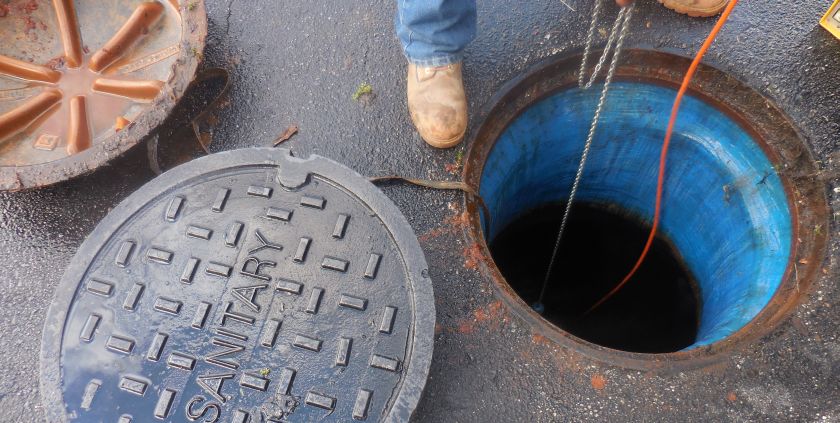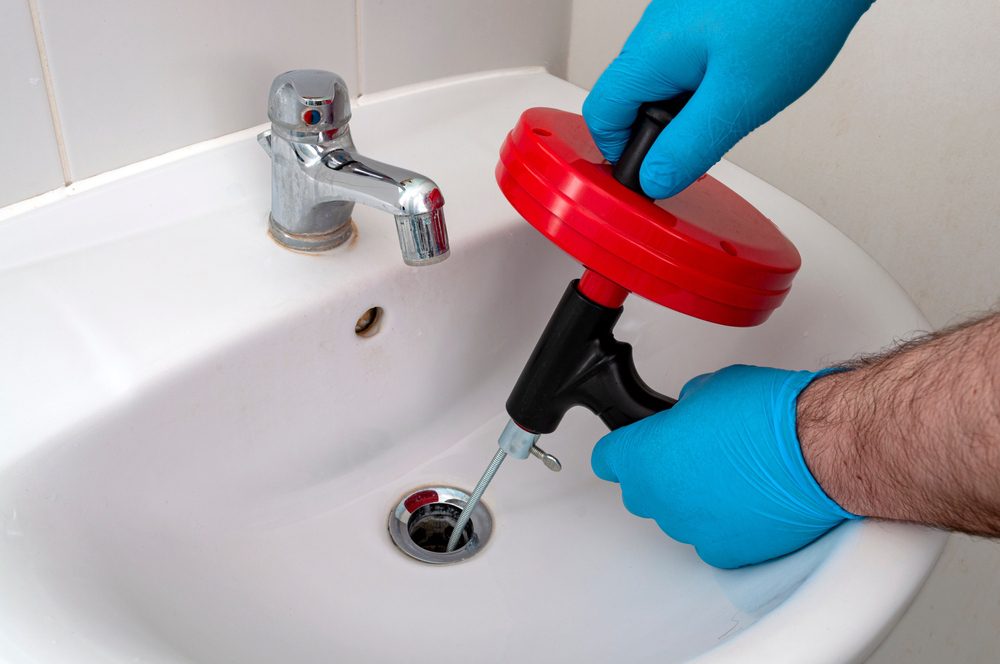Procedures to Take for Repairing a Blocked Drain Prior to Contacting Professional Plumbers
Procedures to Take for Repairing a Blocked Drain Prior to Contacting Professional Plumbers
Blog Article
Just about everyone has got their unique theory with regards to Some easy tips to fix blocked drains.

Intro
Taking care of a blocked drain can be a discouraging experience, interfering with day-to-day activities and possibly triggering damage to your building. Nonetheless, prior to connecting to plumbing professionals, there are steps you can require to deal with the issue yourself. In this guide, we'll discover DIY services and safety nets to deal with a blocked drainpipe effectively.
Determining the Issue
The primary step in resolving a blocked drain is recognizing the indicators. Slow-moving drainage, gurgling sounds, foul odors rising from drains pipes, or water backing up prevail indicators of an obstructed drainpipe. Recognizing these signs early can assist stop further problems.
Typical Root Causes Of Obstructed Drains
Understanding the elements that add to drain clogs is vital for efficient resolution. Typical culprits consist of hair, soap scum, oil, food debris, and international items like hygienic products or paper towels. Tree roots attacking below ground pipes can additionally trigger considerable clogs.
DIY Solutions
For minor clogs, a number of DIY options can be effective. Pouring boiling water down the drain can help dissolve grease and debris. Sodium bicarbonate and vinegar or a mix of salt and cooking soft drink can function as all-natural cleansers. Making use of a plunger or pipes snake to displace obstructions is one more alternative.
Tools and Tools
Having the right devices available can make do it yourself drainpipe cleansing more efficient. A plunger is a flexible tool for getting rid of clogs in sinks, commodes, and showers. A pipes snake or auger can reach deeper blockages, while drain cleaning chemicals can be utilized carefully for persistent blockages.
Preventive Measures
To stay clear of future clogs, taking on safety nets is critical. Install drainpipe guards or filters to capture hair and debris before they go into the pipelines. Frequently flush drains pipes with hot water to liquify oil build-up, and avoid throwing away oil or strong waste away.
When to Call an Expert
While DIY options can fix minor obstructions, certain indications indicate the demand for professional assistance. Consistent blockages, foul odors in spite of cleaning up efforts, or numerous drains pipes backing up concurrently are warnings that call for professional intervention.
Selecting the Right Plumbing Solution
When selecting a plumbing service, think about variables such as experience, licensing, and consumer evaluations. Choose a reputable plumber with a performance history of quality craftsmanship and transparent prices methods.
Price Factors to consider
The expense of specialist drainpipe cleaning services can vary depending upon the severity of the blockage and the plumbing's prices. Request quotes from multiple suppliers and ask about any kind of service charges to guarantee openness and avoid surprises.
Security Measures
When attempting do it yourself drain cleansing, prioritize security. Use safety gloves and eyewear to stay clear of contact with unsafe chemicals or germs. Never ever mix various drain cleansing items, as this can produce hazardous fumes.
Situation Studies
Real-life instances illustrate the performance of do it yourself services and the value of timely expert intervention in fixing drainpipe blockages.
Final thought
By following the tips detailed in this guide, you can efficiently tackle obstructed drains pipes and stop future plumbing issues. Whether going with DIY services or looking for expert assistance, timely activity is crucial to preserving a healthy pipes system and protecting the stability of your home.
How to Clear a Clogged Drain Yourself (And When to Call In the Professionals)
What Can Clog a Drain
Dirt Skin flakes Hair Grease Soap scum Food Offset pipes Tree roots Small objects Mineral buildup DIY Tricks to Unclog a Drain
You can fix this! Once you have identified the source of the clog (or have a vague idea), you can try one or a combination of these fixes in order to clear your plumbing.
Wire Hanger or Snake
Untangle and clear out hair from a drainpipe with a homemade snake. Use a straightened-out wire hanger with a 90-degree angle hook to locate the clog and drag out any unwanted material.
Remember not to push the clog further down to where the wire hanger cannot reach! If you need to follow up with a plunger, give it a try. Your efforts might be more successful after it’s been wire-snaked.
If you want to get fancy and don’t have a wire hanger to spare, head to the store and pick up a hand-operated drain snake. You can get one for $10-$30. It may save you the hassle, and provide additional length to reach deep into the clogged pipe.
Plunger
A cup plunger has a suction cup attached to a wooden handle. The rubber creates a seal around the drain, and increases the pressure force of the plunger.
Plunge for 30-second increments to loosen the clog. This may need to be repeated over the course of 15-20 minutes. Once plunged, run the water to flush the remaining material out of the drain.
Remember– never use a plunger if you have used a chemical drain cleaner. These chemicals can splash up from the force of the plunger and cause serious injury or burns.
Boiling Water
Hot water can sometimes break up materials into a flushable amount. Dirt, grease, and soap buildup requires heat in order to unstick from surfaces.
Take your kitchen kettle and heat your water to a boil. Once it reaches a rolling boil, pour it directly down the drain into the blockage. Carefully follow with plunging, if necessary.
Don’t worry if this takes more than one try! It can often take multiple kettles and repeated plunging in order to clear a particularly stubborn clog.
Chemical Drain Cleaner
As a last resort, pick up a bottle of chemical drain cleaner. Drain-cleaning chemicals are potent, and not very good for the environment.
You may need to wear protective eyewear in gloves before handling your bottle of chemical drain cleaner. Follow the instructions printed on the bottle, and flush with water as soon as the instructions allow. Do not follow with plunging.
Baking Soda and Vinegar
As a safer alternative to chemical drain cleaner, baking soda and vinegar can create a chemical reaction that clears tough clogs.
Combine one cup of cleaning vinegar with one cup of boiling water, and set aside. Once you have done this, pour half a cup of baking soda down the drain. Give the baking thirty seconds to settle and cover a large portion of the problem drain.
Following the baking soda, pour down your vinegar and hot water solution. Once the vinegar and baking soda combine, the mixture will bubble and fix. Let this reaction fizzle in the drain for about an hour.
After an hour, follow with a kettle’s worth of hot water. The heat and liquid should flush out any remaining material.
When to Call a Plumber
If your DIY attempts haven’t cleared your clog drain, it’s time to call in a professional. It’s not worth losing access to your kitchen sink or high-traffic bathroom. A clog in a vital area can keep you from the things you’d rather be doing, and derail your routine.
Anytime a clog is causing water to spread is a time to call in a plumbing service. What starts out as a little bit of water can quickly grow into serious, expensive water damage.
Additionally, a serious clog can result in burst pipes or serious leaks. Make sure you know when to take it seriously!
https://myguysnow.com/how-to-clear-a-clogged-drain-yourself-and-when-to-call-in-the-professionals/

I am just very involved in Some easy tips to fix blocked drains and I hope you appreciated the new piece. If you please take the opportunity to distribute this blog if you enjoyed it. Many thanks for taking the time to read it.
Call Report this page